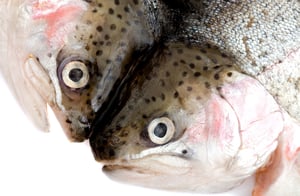Chemical Waste That Impact on Aquatic Life or Water Quality
Undoubtedly, over the last one hundred years, humans have introduced a significant number of chemicals into the environment. While some chemicals are designed to get rid of weeds and pests, a significant amount of chemicals are waste from industrial and agricultural processes. The improper handling of chemical waste has resulted in oceans and the world's water supply being treated like sewage or toxic waste dumps.
While it may seem fine for industrial plants or manufacturers to dispose of two inert chemicals, when those chemicals are mixed the result could be a serious pollutant to the water supply. As streams, rivers, and oceans become polluted, aquatic life can suffer as well as humans. Since water accounts for up to 60 percent of human bodies, it's important for chemicals to be disposed of properly and not end up in the water supply.
Even if you believe the chemical you are throwing down the drain is fine on its own mertis, what if your neighbor is thinking the same thing and the two chemicals combine in the sewer system?
The Impact of Chemicals on Aquatic Life
Already two-thirds of aquatic life is considered to be an endangered species because of improperly disposed chemicals and other waste. However, businesses do not have to dump chemicals into water sources for the effects to be seen. Anytime you dump or release chemical waste, it will have an effect. As it rains, those chemicals are washed into rivers, which feeds the waterfalls and then goes into the ocean.
When a toxic waste harms one organism, it can end up destroying an entire food chain of aquatic life. Improperly disposed chemicals pollute marine life and kills sea mammals, corals, and fish. At the same time, sea birds are affected because they eat the fish. In a matter of fact, any organism that digests affected marine life can have adverse effects.
Just look at what happened to the man in China just recently, who's body was riddled with tapeworms from eating contaminated sashimi.

The Impact of Chemicals on Mammals and Humans
Biomagnification is a process in which animals higher in the food chain - humans - accumulate these these harmful toxins in significantly high concentrations. Simply put, predators higher on the food chain are much more likely to have genetic mutations, diseases, birth defects, and several other deleterious effects of improper certified product destruction.
The long list of harmful pollutants destroying marine and life on land include:
-
Chemical waste and byproducts
-
Garbage
-
Waste water
-
Farming and other agricultural chemicals
Examples of Aquatic Pollution
Over the years, the disposal of chemical waste in agriculture has led to a significant increase in phosphorous and nitrogen. When it comes to water, too much of these nutrients induces eutrophican, which causes the excessive growth of algae and phytoplankton with devastating consequences.
Too much algae produces algal blooms, which spreads toxins known as "brown tides" or "red tides". Both red tides and brown tides are responsible for killing seabirds, fish, marine mammals, and harm humans.
When these harmful blooms die, the bacteria consumes all of the oxygen and creates a dead zone and fish cannot live in this area.
Another example of aquatic pollution is with acid rain, which is the result of certain chemicals. In particular, acid rain is the result of nitrogen oxides and sulfur dioxide forming to make mild acidic compounds. Acid rain is responsible for leaching the soils toxic aluminum.
At really low levels, acid rain can simply stress the fish in streams and lakes. However, at higher levels, acid rain can kill them. In addition, acid rain causes trees to become weaker and creates harmful air pollution to humans.
What Are Detergents?
Detergents can be most simply understood as organic compounds widely used in both homes and industrial process. The main way detergents enter into water is through sewage. There are two different types of detergents and each has different characteristics.
-
Phosphate detergents are used in hard water to soften it and to assist in the suspension of dirt in water. These detergents are extremely caustic.
-
Surfactant detergents are extremely toxic. These types of detergents are used to bolster the foaming, wetting, emulsifying, and dispersing properties of detergents.
How to Properly Dispose Chemicals
Instead of dumping chemicals, which is in most cases are illegal, the best practice is to use a hazardous waste disposal company. Hazard waste companies are highly skilled and trained to properly dispose of harmful chemicals according to state and federal legislation. Instead of taking the risk of damaging the ecosystem and incurring hefty state and federal fines, as Dupont and Walmart recently found out it's best to use a hazardous waste disposal company to properly dispose of the chemicals.
RCRA & CA Waste Codes FREE APP
All the RCRA and California Waste codes can be looked up simply and quickly using the free app My RCRA Pal.
 |
 |
In addition to making sure your business is adhering to the government's standards, hazardous waste companies are also highly effective at providing businesses with greater cost savings. These cost savings are most commonly experienced through the staunch improvement through internal workflow processes, responsiveness, space management, cost mitigation, and the superior management of regulations.


Comment